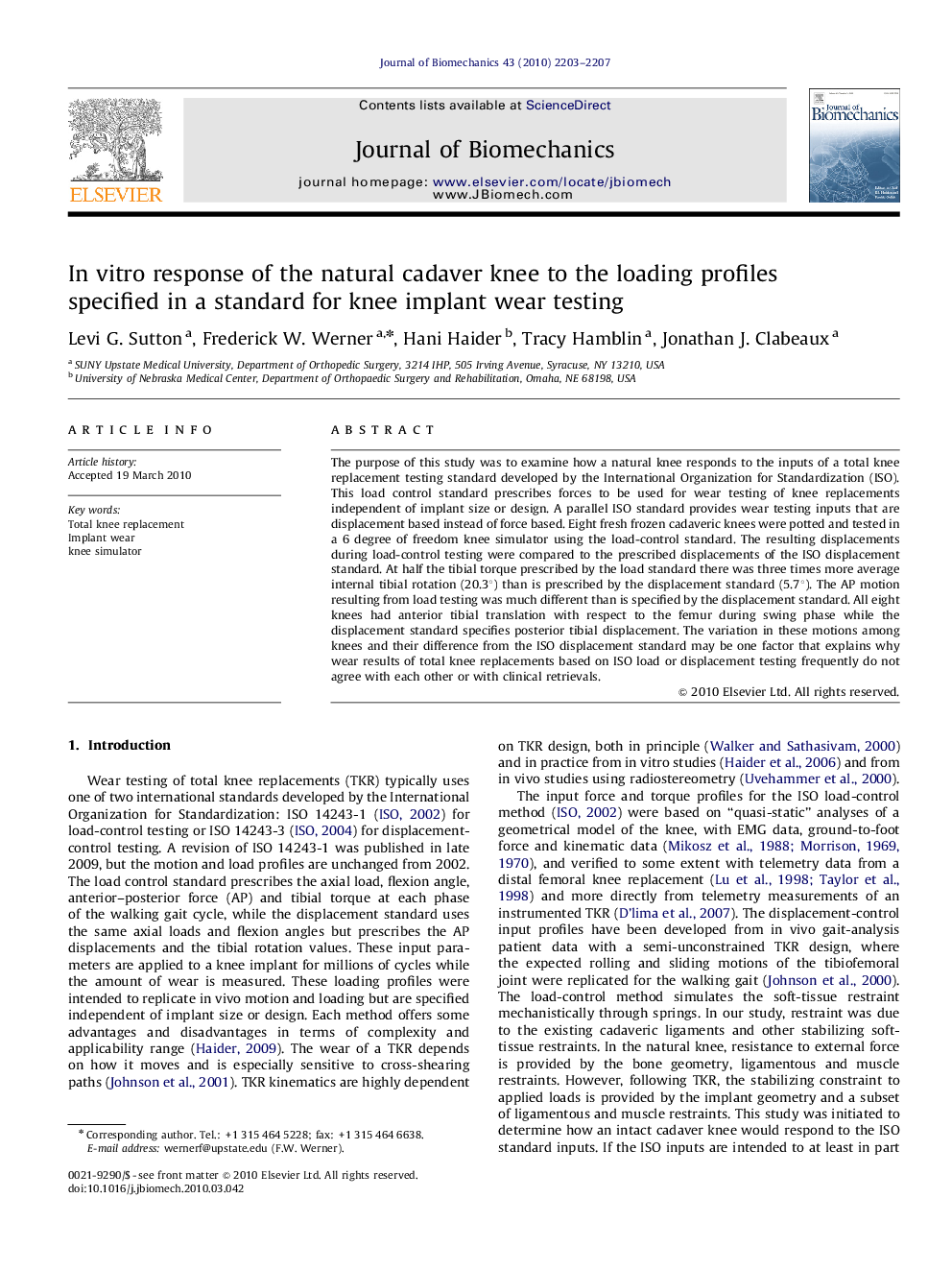| Article ID | Journal | Published Year | Pages | File Type |
|---|---|---|---|---|
| 873740 | Journal of Biomechanics | 2010 | 5 Pages |
The purpose of this study was to examine how a natural knee responds to the inputs of a total knee replacement testing standard developed by the International Organization for Standardization (ISO). This load control standard prescribes forces to be used for wear testing of knee replacements independent of implant size or design. A parallel ISO standard provides wear testing inputs that are displacement based instead of force based. Eight fresh frozen cadaveric knees were potted and tested in a 6 degree of freedom knee simulator using the load-control standard. The resulting displacements during load-control testing were compared to the prescribed displacements of the ISO displacement standard. At half the tibial torque prescribed by the load standard there was three times more average internal tibial rotation (20.3°) than is prescribed by the displacement standard (5.7°). The AP motion resulting from load testing was much different than is specified by the displacement standard. All eight knees had anterior tibial translation with respect to the femur during swing phase while the displacement standard specifies posterior tibial displacement. The variation in these motions among knees and their difference from the ISO displacement standard may be one factor that explains why wear results of total knee replacements based on ISO load or displacement testing frequently do not agree with each other or with clinical retrievals.
